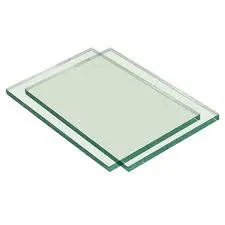Different Types of Architectural Glass
Architectural glass plays a pivotal role in modern construction and design, offering not just aesthetic appeal but also functionality and energy efficiency. With advancements in technology and a growing awareness of sustainable building practices, architects and builders are increasingly relying on specialized glass types to enhance the quality of their projects. This article explores various types of architectural glass, each with its unique characteristics and applications.
1. Float Glass
Float glass, a fundamental type of glass, is made by floating molten glass on top of molten tin, creating a flat, smooth surface. This type of glass is widely used for windows and glass facades due to its clarity and cost-effectiveness. Float glass can be treated for increased strength and thermal performance, making it a versatile choice for buildings.
2. Tempered Glass
Tempered glass is heat-treated to increase its strength. This process involves heating the glass to high temperatures and then cooling it rapidly, producing a product that is significantly stronger than regular glass. If broken, tempered glass shatters into small, blunt pieces, reducing the risk of injury. It is commonly used in situations where safety is a priority, such as in shower doors and storefronts.
3. Laminated Glass
Laminated glass consists of two or more panes of glass bonded together with a polymer interlayer. This type of glass offers enhanced security and sound insulation. In the event of breakage, the interlayer holds the shards of glass in place, preventing them from falling. Laminated glass is frequently used in skylights, glass floors, and high-end residential projects where both safety and aesthetics are of utmost importance.
4. Insulated Glass
Insulated glass units (IGUs) are composed of two or more panes of glass separated by a spacer and filled with an insulating gas, typically argon or krypton. This design effectively reduces heat transfer, making it ideal for energy-efficient buildings. Insulated glass is widely used in residential and commercial windows, contributing to reduced energy costs and improved comfort.
different types of architectural glass
5. Low-E Glass
Low-emissivity (Low-E) glass is coated with a microscopically thin layer that reflects heat while allowing natural light to pass through. This feature enhances thermal insulation and helps control indoor temperatures, making it an excellent choice for energy-efficient buildings. Low-E glass can be combined with insulated glass to further enhance its energy-saving properties.
6. Reflective Glass
Reflective glass has a metallic coating that reflects solar radiation, helping to keep buildings cool and reducing glare. This type of glass is especially useful in hot climates, where controlling solar heat gain is essential for maintaining comfortable indoor temperatures. Reflective glass is commonly used in commercial buildings and skyscrapers, contributing to a modern aesthetic while improving energy efficiency.
7. Colored and Decorative Glass
Architects often choose colored or decorative glass to make a visual statement. This includes stained glass, etched glass, and patterned glass, which can be used in both interior and exterior applications. This type of glass can enhance the beauty of a building, create privacy, and allow for personalization of architectural designs.
8. Smart Glass
Smart glass, also known as switchable glass, can change its opacity in response to electrical signals, temperature, or sunlight. This innovative technology provides control over light and privacy levels, making it ideal for modern offices, conference rooms, and luxury residences. Smart glass not only enhances user experience but also contributes to energy savings by reducing the need for artificial lighting and climate control.
Conclusion
The diversity of architectural glass types allows architects, designers, and builders to create structures that are not only beautiful but also functional and energy-efficient. From safety and security to aesthetic appeal and environmental impact, the choice of glass plays a crucial role in modern architecture. As technology continues to advance, we can expect even more innovative glass solutions that will redefine how buildings interact with their environment. Understanding these different types of architectural glass is essential for making informed decisions in the design and construction of today's buildings.
 Afrikaans
Afrikaans  Albanian
Albanian  Amharic
Amharic  Arabic
Arabic  Armenian
Armenian  Azerbaijani
Azerbaijani  Basque
Basque  Belarusian
Belarusian  Bengali
Bengali  Bosnian
Bosnian  Bulgarian
Bulgarian  Catalan
Catalan  Cebuano
Cebuano  Corsican
Corsican  Croatian
Croatian  Czech
Czech  Danish
Danish  Dutch
Dutch  English
English  Esperanto
Esperanto  Estonian
Estonian  Finnish
Finnish  French
French  Frisian
Frisian  Galician
Galician  Georgian
Georgian  German
German  Greek
Greek  Gujarati
Gujarati  Haitian Creole
Haitian Creole  hausa
hausa  hawaiian
hawaiian  Hebrew
Hebrew  Hindi
Hindi  Miao
Miao  Hungarian
Hungarian  Icelandic
Icelandic  igbo
igbo  Indonesian
Indonesian  irish
irish  Italian
Italian  Japanese
Japanese  Javanese
Javanese  Kannada
Kannada  kazakh
kazakh  Khmer
Khmer  Rwandese
Rwandese  Korean
Korean  Kurdish
Kurdish  Kyrgyz
Kyrgyz  Lao
Lao  Latin
Latin  Latvian
Latvian  Lithuanian
Lithuanian  Luxembourgish
Luxembourgish  Macedonian
Macedonian  Malgashi
Malgashi  Malay
Malay  Malayalam
Malayalam  Maltese
Maltese  Maori
Maori  Marathi
Marathi  Mongolian
Mongolian  Myanmar
Myanmar  Nepali
Nepali  Norwegian
Norwegian  Norwegian
Norwegian  Occitan
Occitan  Pashto
Pashto  Persian
Persian  Polish
Polish  Portuguese
Portuguese  Punjabi
Punjabi  Romanian
Romanian  Russian
Russian  Samoan
Samoan  Scottish Gaelic
Scottish Gaelic  Serbian
Serbian  Sesotho
Sesotho  Shona
Shona  Sindhi
Sindhi  Sinhala
Sinhala  Slovak
Slovak  Slovenian
Slovenian  Somali
Somali  Spanish
Spanish  Sundanese
Sundanese  Swahili
Swahili  Swedish
Swedish  Tagalog
Tagalog  Tajik
Tajik  Tamil
Tamil  Tatar
Tatar  Telugu
Telugu  Thai
Thai  Turkish
Turkish  Turkmen
Turkmen  Ukrainian
Ukrainian  Urdu
Urdu  Uighur
Uighur  Uzbek
Uzbek  Vietnamese
Vietnamese  Welsh
Welsh  Bantu
Bantu  Yiddish
Yiddish  Yoruba
Yoruba  Zulu
Zulu 

